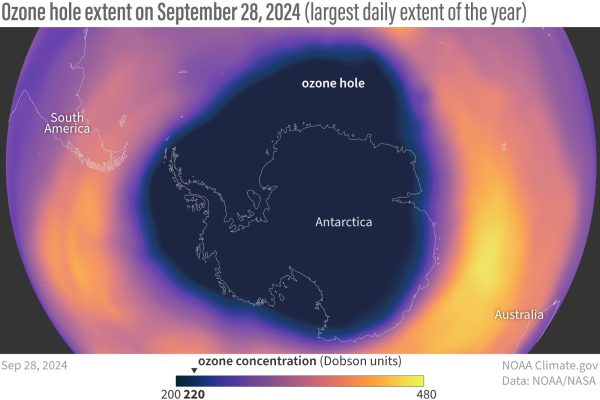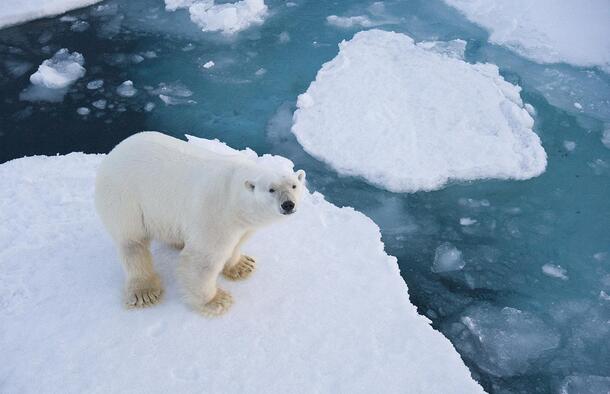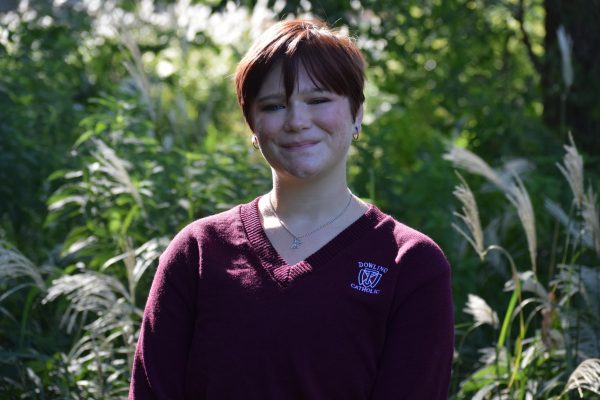Between 2014 and 2023, the world was on average around 2.2°F warmer than during the late 19th Century and 2024 is “virtually certain” to end up as the world’s hottest year on record reaching 2.5°F hotter (BBC). The reason? Climate change.
This is a complex issue. According to the United Nations, climate change can be defined as “the long-term shifts in temperature and weather patterns, that affect society in various ways, including harm to food production, human health, and infrastructure.” While climate change impacts everyone, the impacts are not equally felt —vulnerable communities with fewer resources often face greater exposure to its effects due to existing socioeconomic inequalities. Since humans started burning large amounts of fossil fuels during the start of the Industrial Revolution the amount of CO2 in the atmosphere has risen by about 50%, external.
What’s happening?

Climate change is a natural occurrence in Earth’s history, but the recent rapid warming is not natural. Climate change is directly correlated with hotter temperatures, an increase in severe storms, larger amounts of droughts, warming and rising of sea level, loss of species, decrease in food production, more health risks, as well as poverty and displacements. And the cause? A multitude of factors have played a role over time but fossil fuels (coal, oil, and gasoline) contribute about 75% of global greenhouse gas emissions and nearly 90 percent of all carbon dioxide emissions (United Nations).
Climate change affects all living things and the environment they live in. According to National Geographic, “An ecosystem is a geographic area where plants, animals, and other organisms, as well as weather and landscapes, work together to form a bubble of life.” Some organisms have adapted to changing weather patterns, like some plants, which have adapted to have longer growing seasons or are blooming earlier. But if these changes happen too fast, it can harm other organisms that are dependent, like bees which are reliant on pollination season, or animals that are reliant on certain plants at different times of the year for food or shelter. Another example can be seen in forests, where many animals are reliant on tree cover during certain months of the year, fall patterns have shifted to be later in certain forests, which then takes away shelter.
Currently, the Arctic is most at risk, with temperatures on the rise, we see ice caps melting which increases sea levels. Rising sea levels can damage coral reefs as sediments smooth coral. Warming waters can also lead to bleaching of coral. These ecosystems are home to thousands of species, which rely on healthy coral reefs to survive. According to the National Oceanic and Atmospheric Administration (NOAA), “Ocean ecosystems face an additional challenge: ocean acidification. The ocean absorbs about 30% of the carbon dioxide we release into the atmosphere by burning fossil fuels. As a result, the water is becoming more acidic, which affects marine life.”
Climate change is also significantly affecting our water resources, with far-reaching consequences for both the environment and our daily lives. Rising temperatures are altering precipitation patterns, changing when, where, and how much rain falls. Some regions are facing more intense rainfall, while others are grappling with increasing droughts. The frequency of flooding and droughts has both become more common due to climate change. Precipitation events are more intense and frequent across the United States, while droughts are particularly affecting the Western states. Higher temperatures increase water usage, especially for agriculture, as crops require more water to counteract increased evaporation. Snowpack, a vital source of freshwater, is also impacted, with warmer temperatures leading to reduced snow and earlier melting. This threatens the reliability of snowmelt as a water source, especially in drier regions like the West.
Our food supply is closely linked to climate and weather conditions. Rising temperatures, drought, water scarcity, diseases, and extreme weather events present significant challenges for farmers and ranchers. While adaptations in farming practices and the development of new technologies can help mitigate some of these issues, certain problems, such as heat-related health risks for both farmworkers and livestock, are harder to address (NOAA).
Infrastructure in many places was not built with climate change in mind. In the United States, existing infrastructure may not be able to withstand extreme weather events that bring heavy rains, floods, wind, snow, or temperature changes. Coastal infrastructure and cities are at risk from sea level rise, which can lead to coastal erosion and high tide flooding, which will lead cities to make the hard decision to adapt or go underwater. Currently, scientists are suggesting that cities invest in resilient infrastructure that can withstand future climate risks (United Nations).
Our climate doesn’t just effect our ecosystems and weather patterns, it also affects mental and physical health. According to the World Health Organization, “Climate change induces both immediate mental health issues, like anxiety and post-traumatic stress, and long-term disorders due to factors like displacement and disrupted social cohesion.” Farmworkers may face exhaustion, heatstroke, and even heart attacks, while high temperatures can also harm livestock which largely affects the farming market (WHO).
Climate change is already taking a toll on human health, with shifting weather patterns putting lives in danger in various ways:
- Extreme heat is one of the deadliest weather conditions.
- Rising ocean temperatures are fueling stronger, more dangerous hurricanes, causing fatalities both during and after these storms.
- Dry conditions are increasing the frequency of wildfires, which pose a range of health risks.
- More frequent flooding spreads waterborne diseases, causes injuries, and exposes people to chemical hazards.
- As the range of mosquitoes, ticks, and other pests expands, they bring diseases to new areas.
What can we do?
59% of Americans understand that global warming is mostly human-caused. By contrast, 29% think it is caused mostly by natural changes in the environment (Center for Climate Change Communication). But what can you do as one person to help stop climate change and global warming? Here are some easy day-to-day adjustments you can make to help:
- Limiting household energy usage. Much of our electricity and heat are powered by coal, oil, and gas. Use less energy by reducing heating and cooling, switching to LED light bulbs and energy-efficient electric appliances, washing your laundry with cold water, or hanging things to dry instead of using a dryer (NATO).
- Walk, bike, or take public transport. Most vehicles these days burn gasoline or diesel (less now than in the 1990s). Try walking or riding a bike for short distances, and for longer distances, try carpooling or riding the bus. In the United States, completely going car-free is unreasonable, but getting outside is good for your health and the environment!
- Reduce, reuse, repair and recycle. Something we are all taught in elementary can be used. Electronics, clothes, plastics, and other items we buy cause carbon emissions at each point in production, from the extraction of raw materials to manufacturing and transporting goods to market. To protect our climate try buying secondhand, buy fewer things, and repair what you can. Try bringing a reusable cup next time you get Starbucks or limit the amount of clothes you buy from companies that have harsh labor practices and overproduction.
- Be mindful. All living creatures feel the effects of pollution. Use what you need, and when you have to throw something out, dispose of it properly. Educate others to do the same, and participate in local clean-ups of parks, rivers, beaches, and beyond. You can also limit animal-based products, including red meat, dairy, and farmed shrimp, because of their high emissions of greenhouse gases. Instead, try finding food through homegrown fruits and vegetables, going to farmer’s markets, and limiting the amount of food you buy that uses plastic.
- Speak up! It’s one of the most effective ways to initiate change. Appeal to local and world leaders now.
Counting Down and Looking Forward

There is no one way to fix climate change. Currently, The United Nations is working hard to combat climate change around the globe. The 29th Conference of the Parties to the UN Framework Convention on Climate Change starts November 11th in Baku, Azerbaijan, and goes until the 22nd. Their focus is to bring together world leaders to advance collective action and work to finance, as trillions of dollars are required for countries to drastically reduce greenhouse gas emissions and protect lives and livelihoods from the worsening impacts of climate change. The conference will also be a key moment for countries to present their updated national climate action plans under the Paris Agreement, which are due by early 2025. If done right, these plans would limit global warming to 1.5°C above pre-industrial levels and double as investment plans advancing the Sustainable Development Goals (United Nations).

But the good news, the ozone layer is currently mending itself over the Arctic Circle. Scientists predict that the ozone layer could fully mend by 2066 if we continue to keep up efforts. During the peak of ozone depletion season from September 7 through October 13, the 2024 area of the ozone hole ranked was the smallest it has been since recovery began in 1989, when an international agreement, the Montreal Protocol, a landmark to phase out ozone-depleting chemicals, began to take effect and has been the most successful international agreement. The Agreement pushed to ban chlorofluorocarbons because it degrades to chlorine atoms, which then degrade or thin the ozone layer. They were commonly used in the manufacture of aerosol sprays, blowing agents for foams and packing materials, as solvents, and as refrigerants. But don’t worry companies that produce these products have switched to hydrofluorocarbons, which have been found to be much better for our environment and our health.
It’s important to know why climate change is happening and what we can do to help reverse the effects.
Sources used:
National Oceanic and Atmospheric Administration
World Health Organization
United Nations
NASA Earth Observatory
Climate Clock



